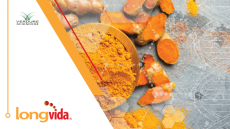Special edition: botanicals
NDI guidance will dampen innovation in botanicals, experts say

The main sticking point is the emphasis in the draft guidance on the need for multiple New Dietary Ingredient notifications on the same ingredient. This would come about from the agency’s insistence that new products containing an NDI will need to submit a new notification in order to verify that the NDI in a new presentation—with different excipients or in a new dosage format, for example—will be safe. In addition, new notifications would be required if one NDI is put into a formula with another NDI, even if both of them have successful notifications on file. The agency has taken the position that combining the two would create a situation in which additional safety information would need to be submitted to the agency.
“Although ABC is still in the process of formulating its response for the public comment docket, I think it’s fair to say that the guidance as currently written would provide an inhibiting force on innovation,” Mark Blumenthal, founder and executive director of the American Botanical Council, told NutraIngredients-USA.
“The idea that any NDI-notified ingredient, when added to another NDI accepted material, would automatically trigger the need for a new NDI would most definitely raise the cost to industry,” he said.
New technology means NDI notification
Blumenthal said this idea is especially hard to understand in light of another provision of the new draft guidance, which is a renewed emphasis on how new production technology might trigger the need for a new NDI notification on even commonplace, familiar ingredients. If you extract ginger with supercritical CO2, so the agency’s thinking seems to go, you are pulling out additional compounds, so it can’t be assumed that the safety of ingredient as it stood in the marketplace still applies. This focus on the letter of the law, that this technique is new, sidesteps whether it chemically alters the extract in a significant way and whether that means as a consequence that the safety profile of an Old Dietary Ingredient is now different enough that new safety information is required. Advocates of the process said that supercritical CO2 is safe, effective, and can result in a higher quality end product.
“The idea that putting two NDIs together, especially those that are based on spices and common foods that might have been required to file a new NDI notification because of new processing technology (like CO2) or a change in solvents, the idea of combining those and then requiring another NDI notification flies in the face of reason,” Blumenthal said.
“I think it’s overkill,” said Alex Schauss PhD, a principal in the consultancy AIBMR. “It’s overkill because CO2 offers a manufacturer a way of making a very consistent product, one that is consistent from lot to lot and from batch to batch. I don’t think FDA should be placing restraints on a technology that can offer that kind of quality.”
If NDI + NDI = NDI, then ODI + ODI =?
Marc Ullman, an attorney at counsel with the firm Rivkin Radler, has had long experience in the industry and has been through a number of NDI filings with clients. In his view, the NDI guidance oversteps the bounds of the original statute—DSHEA—and is really an attempt to get something the agency has had on its wish list, that being a pre-market approval process.
“They are turning this into a new dietary supplement notification, not a new ingredient notification,” he said.
And it singles out NDIs, whereas combinations of other ingredients previously judged to be safe would not be subjected to this notification requirement, which to Ullman doesn’t make much sense.
“If on the food side I take two GRAS ingredients and combine them in a new product there is no need to file a new GRAS submission. I think anyone would scoff at that notion,” Ullman said.
“What happens if we discover that no one previously had sold a combination product with, say, saw palmetto and valerian together, two Old Dietary Ingredients (ODIs). Would there be any justification for a New Dietary Ingredient notification in that case?” he said.
Ullman said he’s not trying to say that there could never be a toxicological concern with a new combination of ingredients, but he said to require a notification in every such case is just pure regulatory overstretch.
“The burden is on the company to understand what it is selling, and if there could a potential issue with a combination,” Ullman said.
Combination products on the rise
Blumenthal said this issue is a pressing concern because combination products seem to be the way the market is going, or at least it was until the guidance was reissued a number of weeks ago.
“We are seeing a rise in the use of herbal combinations and multi ingredient formulations. About one third of dietary supplements sold in this country are now combination products, according to our market report. There seems to be rising acceptance among consumers,” he said.
NutraIngredients-USA’s Botanicals Forum
Experts from Nature’s Way, the American Botanical Council, Herbalist & Alchemist, and GNC will discuss the challenges and opportunities in the botanicals section in NutraIngredients-USA’s Botanical Forum on September 29. The event is free to attend. For more details and to register, please click HERE.

















